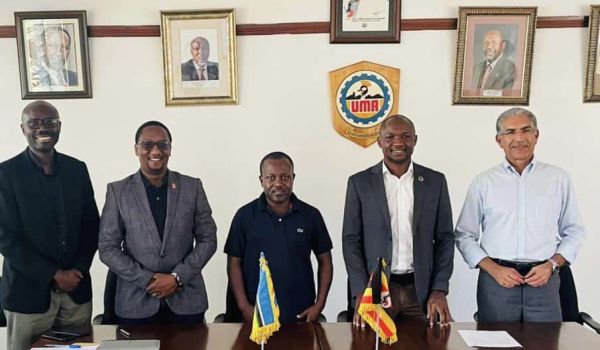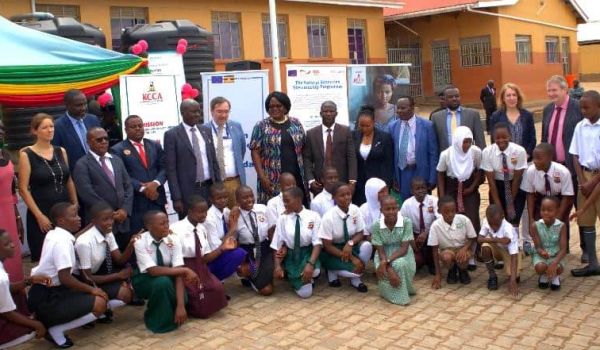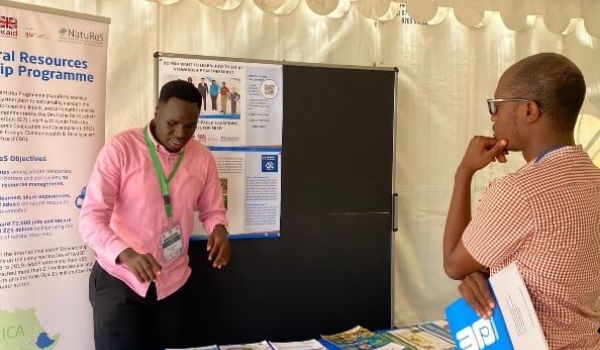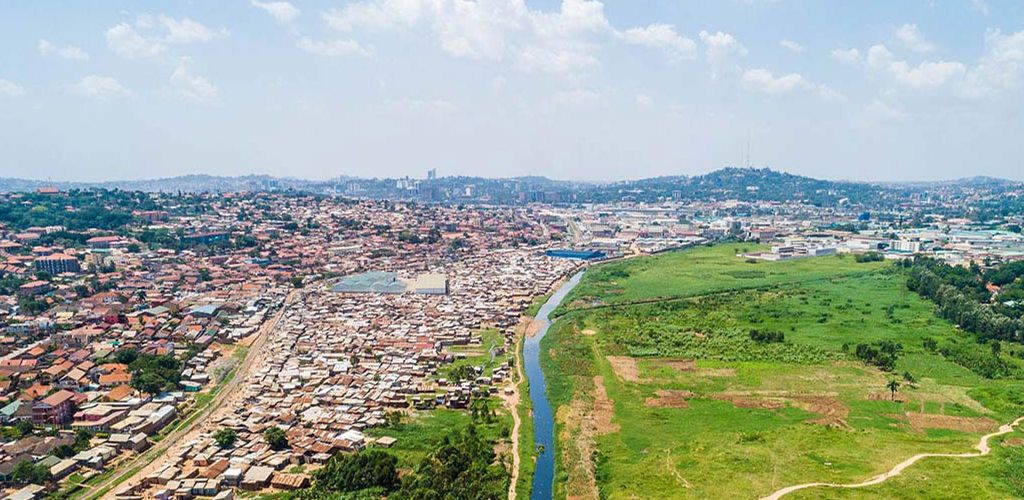
Greater Kampala Metropolitan Area. Copyright: GIZ/Jesper Anhede
Uganda – Balancing Economic Growth and Natural Resources
Uganda has seen a continuous high rate of annual economic growth over the last 20 years. While this has led to a reduction in headcount poverty, the creation of around half a million jobs per year and improved access to basic services, further growth plans and the high rate of population growth and urbanisation are prompting severe environmental risks for population and economy. Issues like wetland encroachment, unregulated wastewater discharge and poor solid waste management have had detrimental effects to Ugandas’ natural ecosystems. To reach its economic growth targets for 2040, the country needs to balance economic growth and its environmental assets, especially water. Green growth is needed to enable Uganda to continue developing, while avoiding or reducing negative environmental impacts. Collaboration and proper management of its natural resources are key to enhancing green growth in Uganda.
EUNOMIA Programme: Creating Green and Prosperous Economies across Uganda
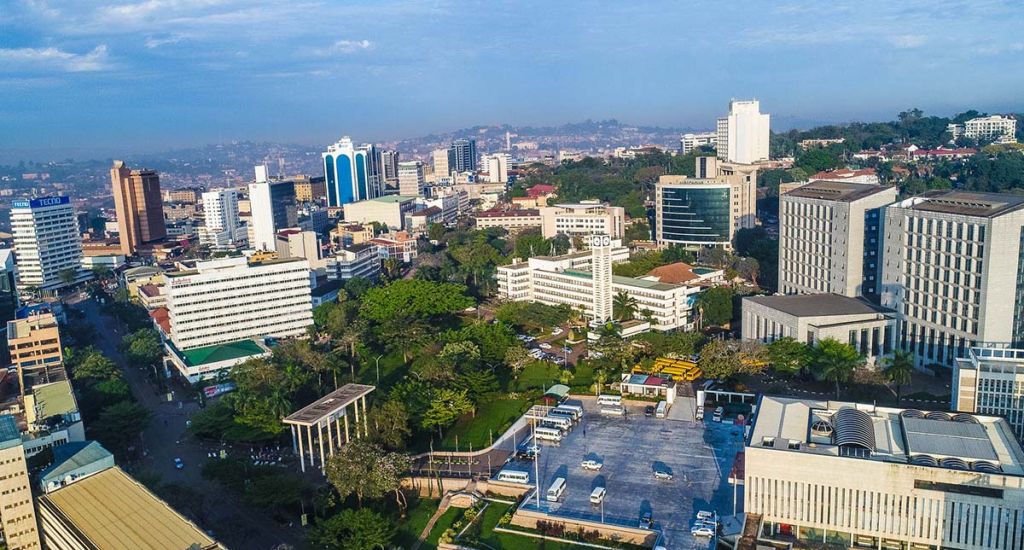
NatuReS Uganda promotes green urban economies. Copyright: GIZ/Vivian Chales
In order to support Uganda’s path towards a green economy, NatuReS Uganda is implementing the project EUNOMIA – Creating green and prosperous urban economies across Uganda. EUNOMIA aims at strengthening the green economy in Uganda, focusing on the two urban centers Greater Kampala Metropolitan Area & Gulu City and targeting specific urban sectors such as flooding, wastewater, solid waste and urban wetlands. It is co-financed by the European Union and the Federal Ministry for Economic Cooperation and Development and is implemented by GIZ from 2020 to 2023. The main objectives of EUNOMIA are:
- To develop effective partnerships for improved multi-stakeholder stewardship of natural resources
- To increase capacity of public and civil society actors, as well as the private sector on natural resources stewardship
- To embed lessons learned and emerging good policy and practice with regard to natural resources stewardship
Under the EUNOMIA project, the following partnerships are implemented:
Partnerships in Uganda
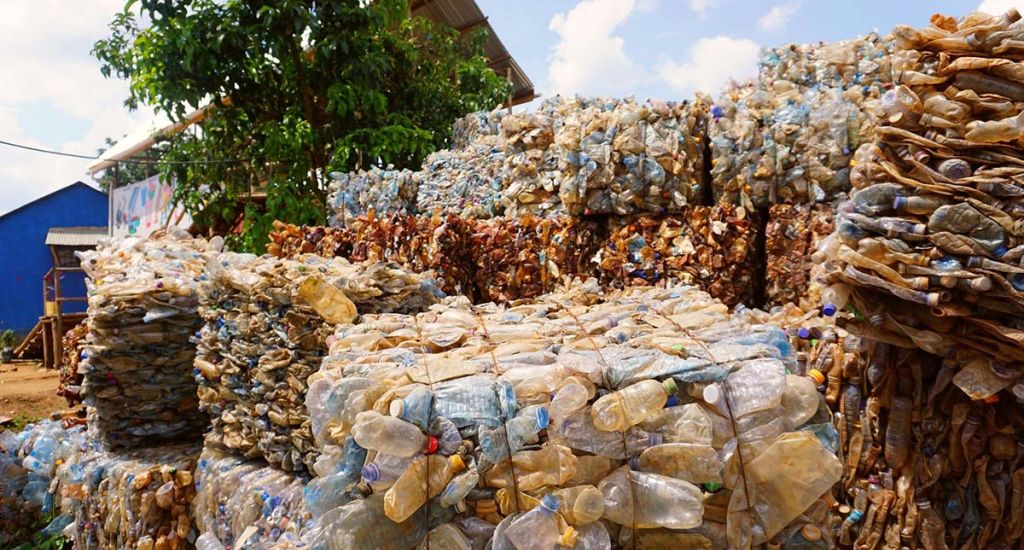
NatuReS supports recycling hubs in Uganda. Copyright: GIZ/Vanessa Tyaba
Greater Kampala Metropolitan Area PET Plastic Recycling Partnership
Location: Greater Kampala Metropolitan Area, such as Makindye-Ssabagabo, Mukono and Nansana Municipalities among others
Background: Rapid economic growth and urbanisation of the Greater Kampala Metropolitan Area has led to an increase in the area‘s waste generation. The amount of solid waste generated overwhelms the capacity of the urban authorities to collect and dispose of it. About 40 percent of the waste created in Kampala is collected and delivered to designated landfills every month. The remaining uncollected waste is dumped in unauthorised sites, burnt on roadsides or washed into storm water channels that flow into the wetlands and Lake Victoria.
Aim: Improving the sustainable management of PET plastic waste in the Greater Kampala Metropolitan Area by developing an inclusive green recycling sector
Activities:
- Improving the recycling value chain, including upstream collectors, collection hubs, recycling plants and downstream users of plastic waste
- Improving attitude and behaviour towards waste and plastic in the Greater Kampala Metropolitan Area
- Improving the policy framework to facilitate greater recycling by private and public actors
NatuReS working areas: Circular Economies
Partners: Ministry of Water and Environment, National Environment Management Authority (NEMA), Kampala Capital City Authority (KCCA), Coca-Cola, Mukwano Ltd., Uganda Water & Juice Manufacturers Association, Global Green Growth Institute (GGGI)
For more information about the partnership, download this factsheet.

Gulu Integrated Catchment Management Partnership (GICM)
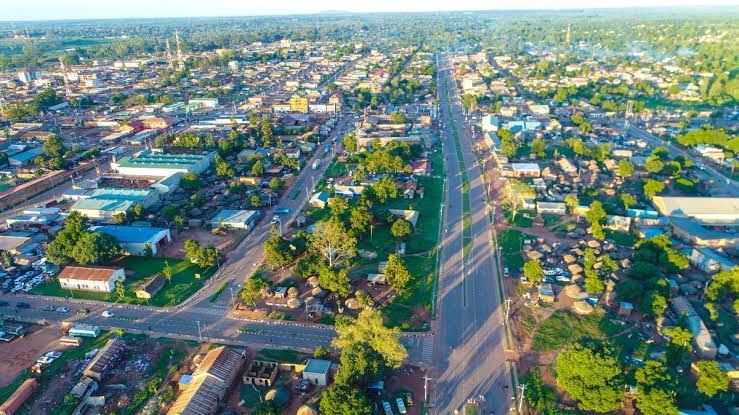
Gulu, one of Uganda’s fastest growing cities. Copyright: Gulu City Council
Location: Gulu City
Background: Gulu in Northern Uganda is one of the country’s fastest growing cities, with a population growth rate of approx. 2.8% per year. As the city continues to grow, so does the amount of solid waste. Gulu’s young waste management system, however, is unable to deal with these amounts, which are causing a major threat to the city’s natural resources. Particularly the water resources are increasingly polluted by plastic and organic waste.
Gulu lies within Albert Nile and Aswa Catchments of the Upper Nile Water Management Zone. Both catchments are characterized by high vulnerability to dry spells. Climate conditions of the past years have led to the drying up of the Oyitino valley dam and the associated streams, which serve as main water source for the city. The accellerating rate of wetland degradation poses an additional threat.
Aim: To tackle these challenges, NatuReS has facilitated the formation of the Gulu Integrated Catchment Management partnership, working with key stakeholders from the public, private sector and civil society organisations to reduce the amount of solid waste entering the environment and securing the quality and quantity of the city’s main water source.
Activities:
- Support the development of the ‘Oyitino 2 Source Protection Implementation Plan’ and the implementation of green infrastructure measures
- Strengthen the capacity of the Oyitino 1 and Oyitino 2 Water Source Protection Coordination Committees through trainings and exchange field visits
- Develop a behavior change and communication strategy and action plan for solid waste management in Gulu
- Develop an operational manual for local solid waste collection schemes
- Support small and medium enterprises in the solid waste management value chain through trainings and equipment
- Establish and equip at least one plastic recycling hub in the city
NatuReS working areas: Resilient Catchments and Resilient Circular Economies.
Partners: Ministry of Water and Environment, Gulu City Council, National Water and Sewerage Corporation, Takataka Plastics and Community Empowerment Education Development (CEED) Uganda
For more information about the partnership, download this factsheet.

Greater Kampala Integrated Flood Resilience Partnership
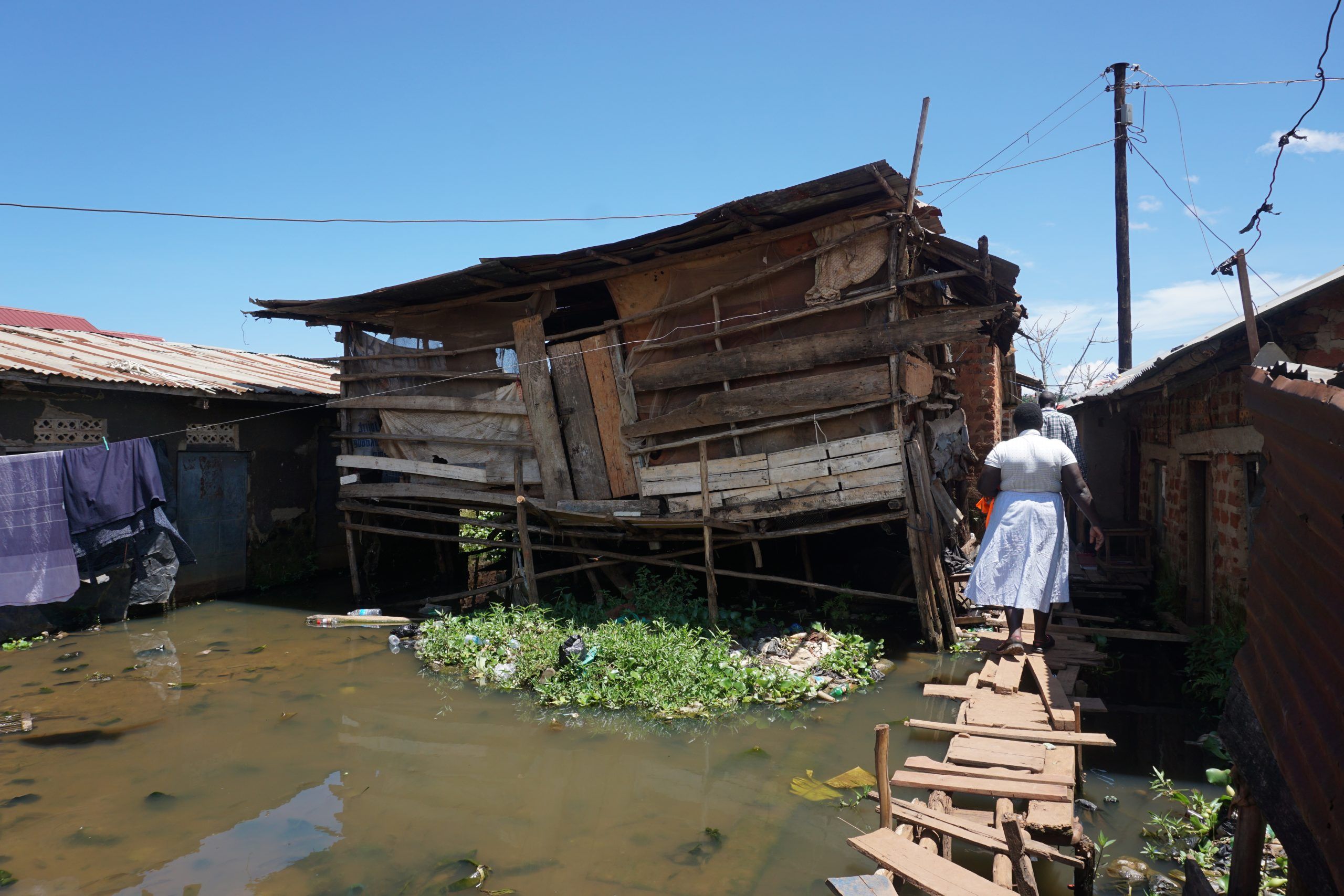
Flooding in an informal settlement in the Kansanga catchment. Copyright: GIZ/Alisa Knoll
Flash floods are a recurring water security threat in Kampala Capital City and its neighbouring municipalities. The rapid urbanisation of the Greater Kampala Metropolitan Area (GKMA) has led to increased impervious surfaces in ecologically sensitive areas such as steep slopes, wetlands and flood plains, which are relevant for flood control. In addition, Kampala’s existing drainage systems have outlived their capacity and are often blocked by solid waste and silt emerging from adjacent communities. This is further worsened by limited collective action of public, private and civil society actors in operation and maintenance of the drainage systems. Awareness measures regarding storm water management in the metropolitan area are lacking. This results in recurring destructive floods.
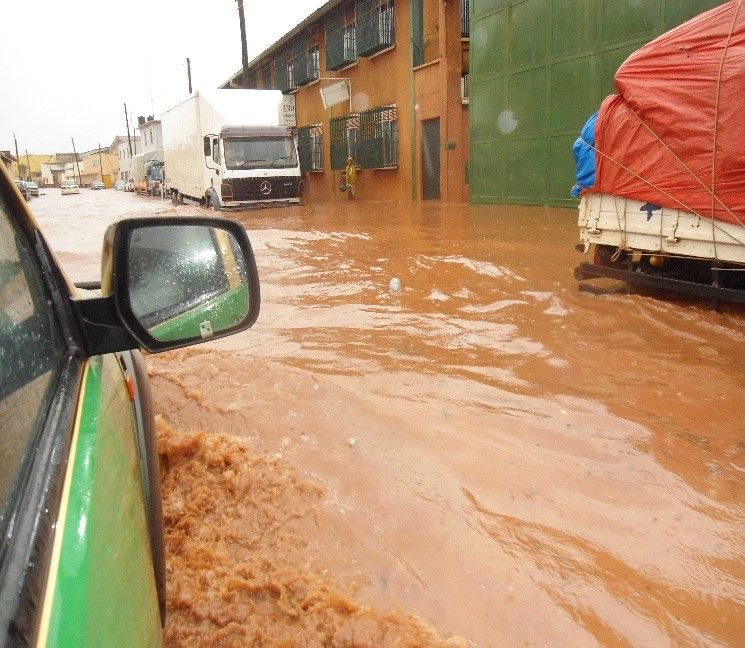
Flooding in Kampala Central Industrial Area. Copyright: KCCA/Joan Magayane
These flash floods are associated with large socio-economic challenges to both businesses and residents of GKMA. Examples include economic losses due to the damage of assets, disruption of business operations, reduced workforce attendance, difficulties for customers to access businesses and overall challenges for the smooth functioning of supply chains. About 10% of Kampala’s jobs are at risk due to their location in flood risk zones.
Solutions for effective flood mitigation
To mitigate and adapt to the current flooding challenges, GKMA requires integrated flood risk management solutions through the combination of catchment management and engineering solutions, particularly investments in blue-green infrastructure. Blue-green infrastructure is an approach to urban flood resilience that utilises the benefits of urban greenspaces and naturalised water-flows. Examples include green roofs, retention ponds, bioswales, rain gardens, rainwater harvesting systems etc. Government, private actors and communities need to work collaboratively to develop blue-green solutions which are scalable and fit the respective context.
Location: Up to two sub/micro-catchments within GKMA. Prioritized are areas where business entities are affected by flooding, thereby safeguarding jobs and investments.
Aim: To promote investment in blue-green and innovative grey infrastructure and inclusive solutions for improved urban flood resilience and enhanced socio-economic development.
Activities:
- Build a base of evidence for successful flood mitigation through the integration of blue-green infrastructure solutions in GKMA.
- Pilot sustainable blue-green infrastructure and innovative grey solutions to solid waste in drainage channels.
- Promote private sector investments and contributions in flood resilience measures and infrastructure.
- Strengthen capacities of government agencies and the local policy framework to ensure public-private-civil society involvement in urban flood resilience.
- Build community resilience by enhancing communities’ involvement in flood resilience and behavioral change measures.
NatuReS working areas: Resilient Cities
Partners: Ministry of Water and Environment (MWE), Kampala Capital City Authority (KCCA) and Uganda Manufacturers Association (UMA) in collaboration with private sector actors and civil society organisations.
For more information about the partnership, download this factsheet.

Commercial Flower Farms Integrated Catchment Management Partnership
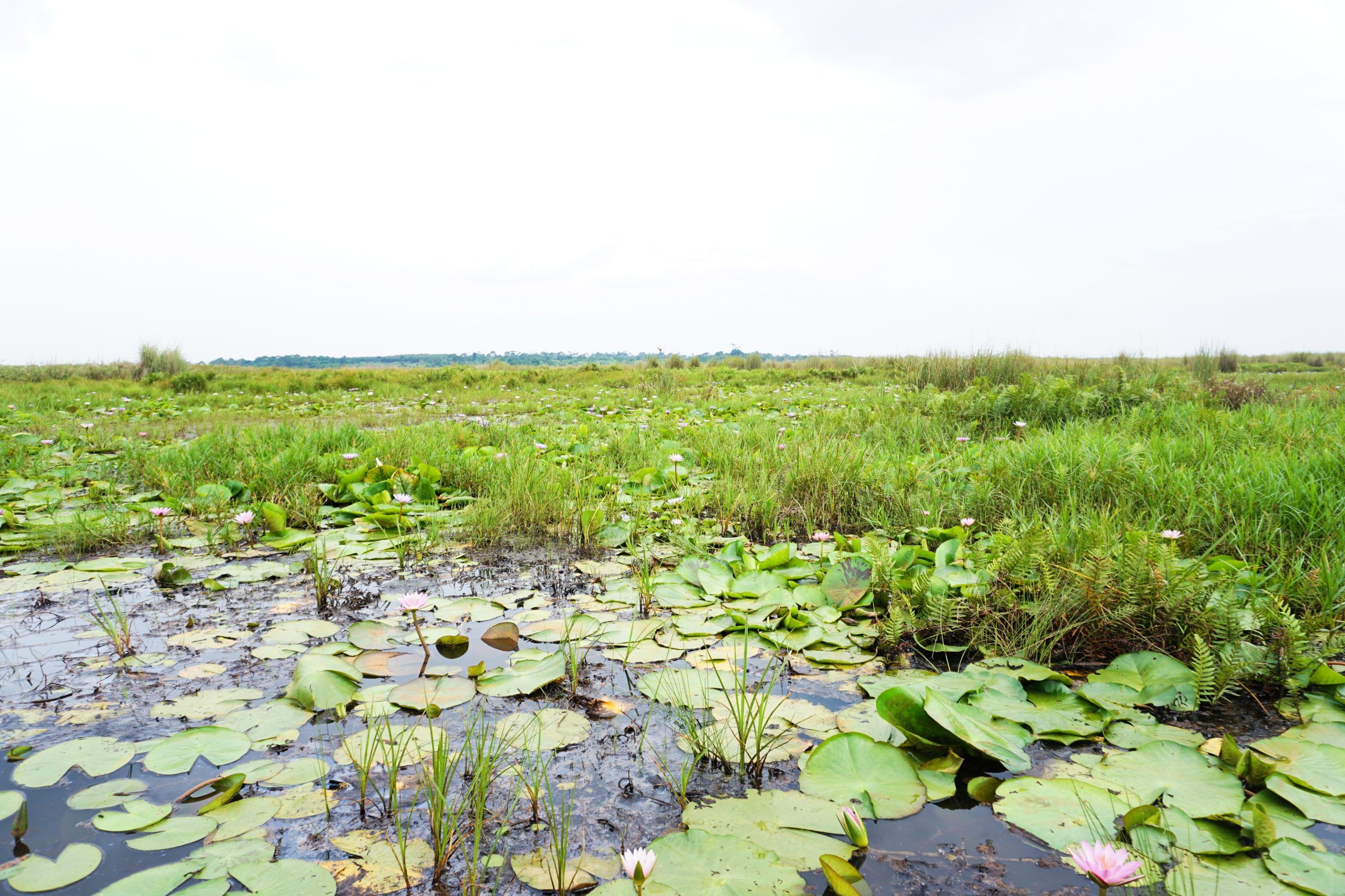
Wetlands, low-lying waterlogged areas, form unique ecosystem that store and purify large quantities of water. Copyright: GIZ/Alisa Knoll
Wetlands in Uganda form a unique ecosystem which not only supports diverse animal and plant life, but also has the power to store and purify large quantities of water for domestic and commercial use. One water-intensive sector present in the area is the floriculture sector – 13 out of 15 Commercial Flower Farms (CFFs) in the country are located in the Greater Kampala Metropolitan Area (GKMA) around the Lake Victoria basin.
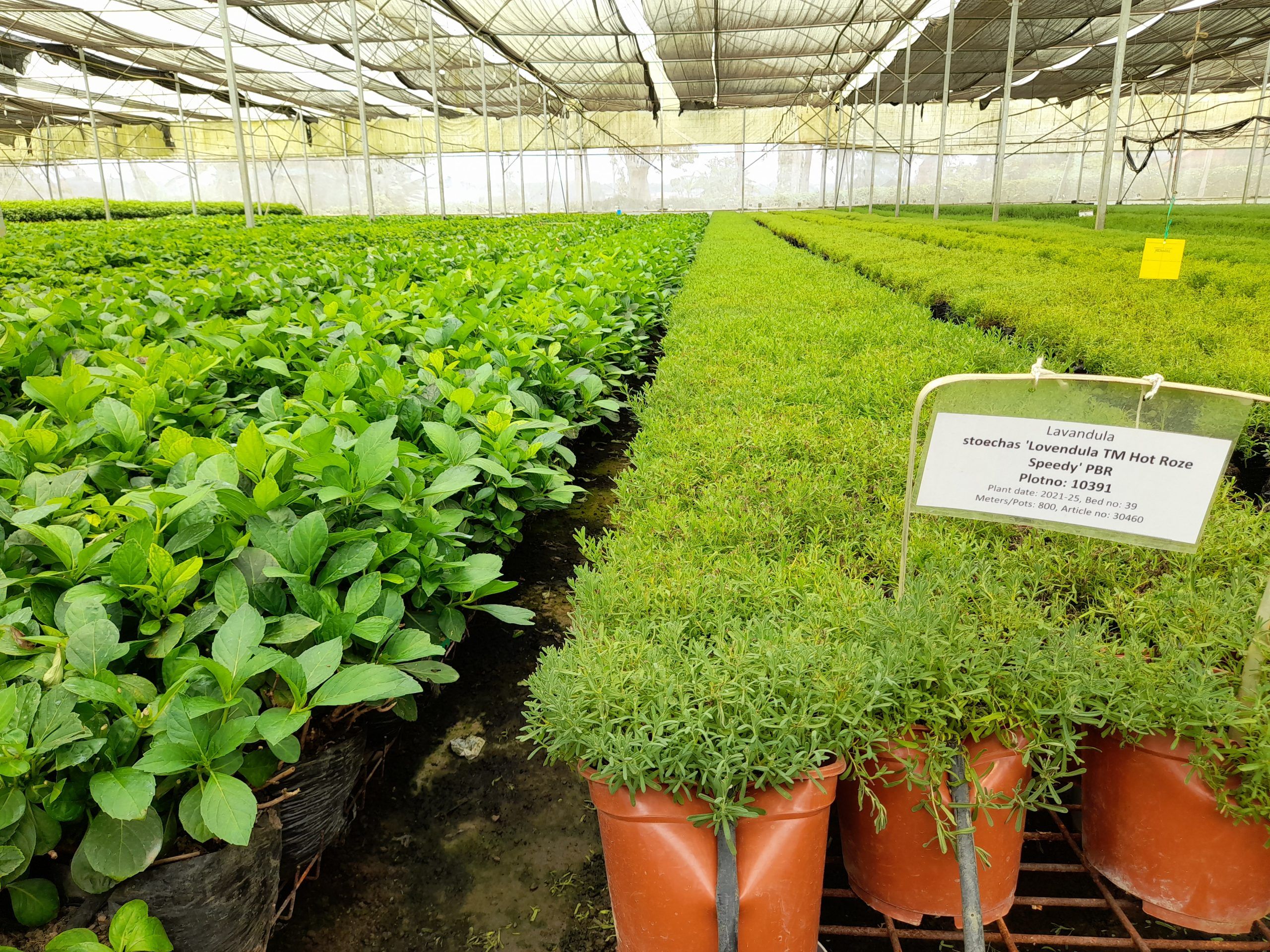
Commercial Flower Farm in Greater Kampala Metropolitan Area cultivating plants such as Lavender. Copyright: David Tushabe
The flower industry provides employment opportunities, foreign exchange, and domestic revenue to the Ugandan economy. According to the Uganda Flower Exporters Association, the industry’s investments in GKMA are estimated at USD 100 Million, providing about 10,000 jobs, of which 80 per cent are women.
However, the expansion of the industry, coupled with rapid population growth around GKMA, has increased the pressure on water and wetland resources, posing social and environmental threats to communities and the commercial flower farms. To safeguard the investments of the commercial flower farms, the jobs they provide to the people, and to maintain the ecological functions of the water and wetland ecosystems, there is a need to strengthen collaboration and coordination between the flower farms, the government institutions and civil society actors.
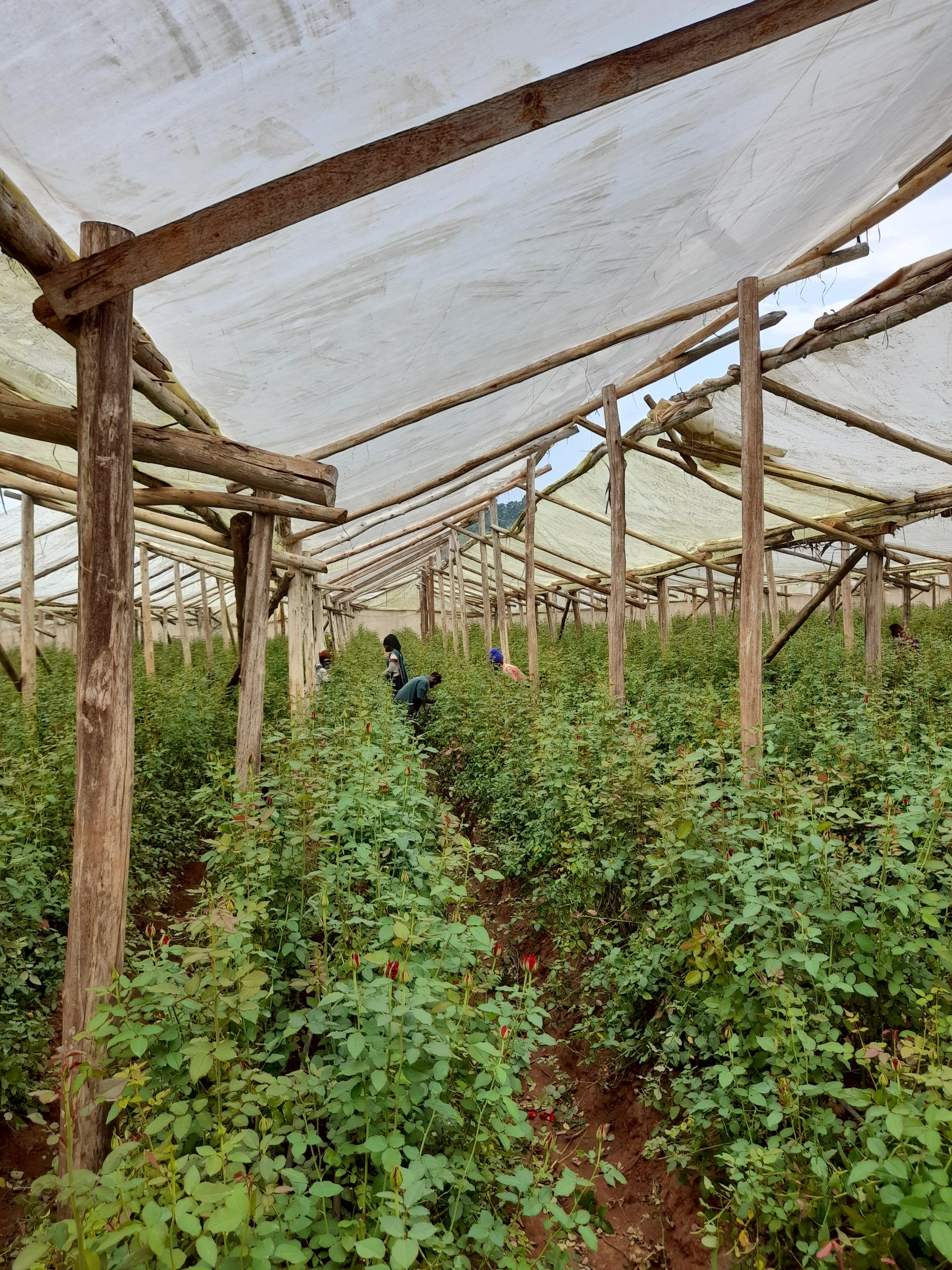
Commercial Flower Farm in Greater Kampala Metropolitan Area cultivating roses. Copyright: David Tushabe
Location: Greater Kampala Metropolitan Area (GKMA)
Aim: To strengthen collaboration between the public, private sector, and civil society in the flower industry for a sustainable use of natural resources around GKMA.
Activities: Under the three main components of (1) Water and wetlands resource use and management, (2) Compliance and regulatory support, & (3) Occupational health and safety (OHS) support, partners will work together on the following activities:
- Review and pilot the Uganda Flower Code of Conduct
- Undertake trainings and awareness campaigns on national environment regulations, as well as water and wetland management, to enhance self-compliance by the CFFs
- Set up and strengthening of farm compliance committees through trainings and exchange visits
- Development and pilot of solid waste management guidelines for the flower farms
- Review and pilot of Occupational Health and Safety (OHS) training manuals and checklists for the flower farms
- Training of OHS and gender committees in the CFFs
- Pilot micro-catchment restoration activities such as wetland demarcation, restoration and alternative livelihood schemes for wetland user communities around CFFs
NatuReS working area: Resilient Catchments
Partners: Ministry of Water and Environment (MWE), National Environment Management Authority (NEMA), Nature Uganda, Uganda Flower Exporters Association (UFEA) in collaboration with 13 commercial flower farms.
For more information about the partnership, download this factsheet.

